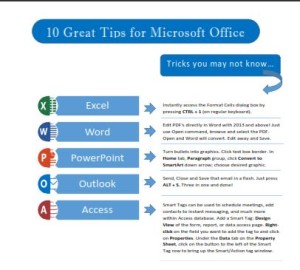
Have you struggled with creating columns in Word to get that nice, professional look only to have them display off balance, with one column much longer than the other(s)? Here’s some ways to whip that into shape!
Word allows you to give your work a more magazine or newspaper look by breaking up the document or specific paragraphs into columns. You can have Word do this automatically, or specify where you want the column breaks.
Deciding the number of columns will be based on your margins, font sizes, line and paragraph spacing, graphics and any additional settings. The fast, easy way is to let Word do the lifting.
Have Word Create Column Breaks Based on Selection
If you want specific content to be displayed in columns:
- Select the contents that you want to display in two or more columns
- Click the Layout tab on the Ribbon
- In the Page Setup group, choose the drop down on Columns
- Choose the number of desired columns

Word will automatically add section breaks at the top and bottom of the column content and make the columns as even as possible. If you add content at the end of the column(s), Word will rebalance them.
Inserting Columns with No Content Selected
If you want the entire document displayed in columns, click anywhere in the document, and follow the steps above.
The difference here is that Word does not insert section breaks so will not automatically adjust column lengths as you add content.
If the columns are not equal length, you can have Word do it by inserting a continuous section break at the end of the last column:
- Click at the end of the text in the last column
- Display the Page Layout tab of the ribbon
- Click on the drop-down on Breaks in the Page Setup group
- Choose Continuous under Section Breaks section

Note: If you like the results, you are good to go but if you want to change the column widths or adjust space between columns, you can select the More
Columns… command at the bottom of the Columns drop down.
Although Word is not a full-blown desktop publisher such as InDesign or even Publisher, it can produce some pretty fine looking work just by using some built-in templates or tools. There are more adjustments you can make such as having your heading (and other content) be in one column and the rest of the document in multiple columns. We’ll look at that in a future post.
Have you used this feature in Word before? Did you get the expected results? If you haven’t experimented with columns, give it a try and let me know how it went!






 Click to download great tips to speed up your Office projects.
Click to download great tips to speed up your Office projects.